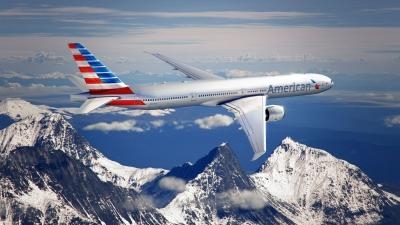Fri, Sep 12, 2014
First Mainline Carrier To Obtain FAA Approval For The Devices
American Airlines was the first airline with a paperless cockpit, and now the airline's cabins are also paperless. The airline is the first mainline carrier to provide flight attendants with electronic manuals, accessible through a handheld tablet.

"The accessibility and functionality that the tablet provides our flight attendants will greatly improve their work environment," said Hector Adler, vice president of Flight Service for American Airlines. "The tablet allows us to reduce our dependency on paper products and to share important safety information with our flight attendants more quickly. This is a very exciting and important milestone for all of us at American as we modernize our processes and provide our employees with the best tools to do their job, and provide better service to our customers."
American no longer relies on printing and shipping updates for flight attendant manuals, saving the company $300,000 annually. As a result, flight attendants can now update their manuals in a matter of minutes and search for items in seconds, improving work efficiencies. Switching to the lightweight 5.3-inch Samsung tablet from the nearly 5-lb. paper manual will save the company nearly $650,000 in fuel annually based on current fuel prices. The tablets also will help reduce the amount of carbon dioxide emissions by 2100 metric tons – or 4.6 million pounds annually.
American's flight attendants began using eManuals exclusively on Sept. 1, after a six-month test-evaluation period, with oversight from the FAA. In addition to the manual, the tablet provides real-time updates to flight attendants about premium customers, special meals, connection gates, special services and other information.
American's first flight attendant training class that trained solely on the tablet will graduate in October. The eManuals will roll out to US Airways flight attendants after the two carriers achieve a Single Operating Certificate, planned for mid-2015.
American's pilots were the first to use an Electronic Flight Bag through all phases of flight. The 1.2 pound iPad replaced a 35-pound kitbag, cutting the risk of injury and saving an estimated $1.2 million of fuel annually.
More News
A Puff Of Smoke Came Out From The Top Of The Engine Cowling Followed By A Total Loss Of Engine Power On May 9, 2025, about 1020 mountain daylight time, an experimental amateur-buil>[...]
From 2022 (YouTube Edition): Jenny, I’ve Got Your Number... Among the magnificent antique aircraft on display at EAA’s AirVenture 2022 was a 1918 Curtiss Jenny painstak>[...]
Very High Frequency (VHF) The frequency band between 30 and 300 MHz. Portions of this band, 108 to 118 MHz, are used for certain NAVAIDs; 118 to 136 MHz are used for civil air/grou>[...]
“From approximately November 2021 through January 2022, Britton-Harr, acting on behalf of AeroVanti, entered into lease-purchase agreements for five Piaggio-manufactured airc>[...]
Microburst A small downburst with outbursts of damaging winds extending 2.5 miles or less. In spite of its small horizontal scale, an intense microburst could induce wind speeds as>[...]
 NTSB Prelim: Lee Aviation LLC JA30 SuperStol
NTSB Prelim: Lee Aviation LLC JA30 SuperStol Classic Aero-TV: Curtiss Jenny Build Wows AirVenture Crowds
Classic Aero-TV: Curtiss Jenny Build Wows AirVenture Crowds ANN's Daily Aero-Term (05.30.25): Very High Frequency (VHF)
ANN's Daily Aero-Term (05.30.25): Very High Frequency (VHF) Aero-News: Quote of the Day (05.30.25)
Aero-News: Quote of the Day (05.30.25) ANN's Daily Aero-Term (05.31.25): Microburst
ANN's Daily Aero-Term (05.31.25): Microburst



